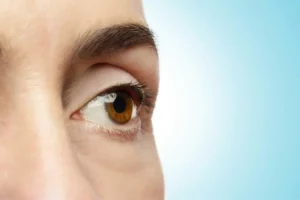Home » What are Implantable Collamer Lens
SMILE Eye Surgery Cost: An In-Depth Guide

Understanding SMILE and LASIK Eye Surgery Procedures
Before diving into the cost of SMILE eye surgery, it is important to understand the differences between SMILE and LASIK procedures, as they are both popular methods of laser vision correction surgery. SMILE, or Small Incision Lenticule Extraction, is a minimally invasive procedure that corrects refractive errors such as myopia (nearsightedness), astigmatism, and hyperopia (farsightedness). LASIK, or Laser-Assisted in Situ Keratomileusis, is another laser vision correction procedure that similarly addresses refractive errors.
Table of Contents
LASIK Procedure
LASIK surgery is an outpatient procedure that takes about 15 minutes per eye. Before the surgery, the patient is given local anaesthesia to numb the eye and reduce any discomfort. The surgeon then creates a thin flap in the cornea using either a microkeratome blade or a femtosecond laser. The flap is then lifted, and the laser is used to reshape the cornea by removing small amounts of tissue. The laser is guided by a computer-controlled instrument called an excimer laser, which precisely removes the tissue based on the patient’s prescription. After the cornea is reshaped, the flap is repositioned, and the surgery is complete, and the eye heals naturally.

SMILE Procedure
SMILE lasts for about 10-15 minutes.
Prior to starting the procedure, the surgical team inputs measurements tailored to your eye. After this, patients are given numbing drops to numb the eye. Anxiolytics can also be provided to put patients at ease.
The surgeon will then position you appropriately, with the help of the team, to ensure that your eye is secured accurately in line with the laser. Your eye is then cleaned to help prevent infection.
The SMILE procedure involves using a VisuMax femtosecond laser from ZEISS to create a small lenticule (a thin disc of corneal tissue) within the cornea. The surgeon then makes a small incision and removes the lenticule, altering the shape of the cornea and correcting the refractive error.

Factors Influencing SMILE Eye Surgery Cost
The cost of SMILE eye surgery can vary significantly depending on several factors, including:
1. Geographic Location: The cost of SMILE eye surgery can vary depending on the location of the practice. In areas with a higher cost of living, such as large cities, the cost of SMILE eye surgery may be higher.
2. Surgeon Experience: The experience and skill of the surgeon performing the procedure can affect the cost of SMILE eye surgery. Surgeons with more experience and a proven track record of previous successful procedures may charge more.
3. Technology: The cost of SMILE eye surgery can also be affected by the technology of the machines used during the procedure. Practices that use the latest technology may charge more than those that use older equipment.
4. Additional Services: Some practices may include additional services, such as pre-operative testing or post-operative care, in the cost of SMILE eye surgery. This can affect the overall price of the procedure.
Average Cost of SMILE
The cost of SMILE eye surgery typically ranges from $3,000 to $4,000 per eye. This cost typically includes the eye exam, surgery, follow-up appointments, and eye drops needed for recoveryThe exact cost depends on factors such as geographical location, surgeon’s expertise, and additional services provided.
Health insurance typically does not cover SMILE or LASIK eye surgery, as they are considered elective procedures. However, you may be able to use your Flexible Spending Account (FSA) to pay for a portion or the entire cost of the surgery. It is crucial to check with your insurance provider and FSA administrator to determine eligibility and coverage.
Remember to explore financing options and payment plans to make the procedure more accessible and discuss these options with your eye doctor during the consultation phase. Ultimately, choosing the right laser vision correction procedure can lead to better vision and improved quality of life.
Financing Options and Payment Plans
For some patients, the cost of SMILE eye surgery may be a barrier to receiving the procedure. Fortunately, there are several options for financing SMILE eye surgery, including:
1. Health Savings Accounts (HSAs): HSAs are tax-advantaged accounts that can be used to pay for medical expenses, including SMILE eye surgery. Contributions to an HSA are tax-deductible, and funds can be withdrawn tax-free to pay for qualified medical expenses.
2. Flexible Spending Accounts (FSAs): FSAs are similar to HSAs in that they allow pre-tax contributions to pay for medical expenses, including SMILE eye surgery. However, unlike HSAs, funds in an FSA must be used by the end of the year, or they are forfeited.
3. Payment Plans: Some practices that offer SMILE eye surgery may offer payment plans to help patients pay for the procedure over time. This can make the cost more manageable for some patients.
4. Financing Options: Some third-party companies offer financing options specifically for medical procedures. These companies may offer low-interest loans or payment plans that can be used to pay for SMILE eye surgery.
Many clinics offer financing options and payment plans to make SMILE eye surgery more accessible to patients. This can include interest-free financing, extended payment plans, and discounts for paying in full upfront. It’s essential to explore all options and discuss them with your eye doctor during the consultation phase.
Health Insurance and FSA
Health insurance typically does not cover SMILE or LASIK eye surgery, as they are considered elective procedures. However, you may be able to use your Flexible Spending Account (FSA) to pay for a portion or the entire cost of the surgery. It is crucial to check with your insurance provider and FSA administrator to determine eligibility and coverage.
For NYC Patients
Comparing SMILE and LASIK Eye Surgery Costs
While the cost of both SMILE and LASIK procedures can be similar, it’s essential to consider other factors that could impact your decision, such as recovery time, side effects, and success rates.
Recovery Time and Side Effects
SMILE has a faster recovery time compared to LASIK, as it does not involve creating a corneal flap. Most patients can return to their daily activities within a few days. Additionally, SMILE has a lower risk of dry eye and other side effects such as halos or glare.

Some potential side effects and risks associated with SMILE include:
1. Infection: While rare, infections can occur after SMILE surgery. Using prescribed antibiotic eye drops and following your eye doctor’s postoperative care instructions can minimize this risk.
2. Overcorrection or under correction: In some cases, the procedure may not fully correct the patient’s refractive error, necessitating additional treatment, such as enhancement surgery or wearing glasses or contact lenses.
3. Halos and glare: Some patients may experience halos or glare around lights, particularly at night, after undergoing SMILE surgery. These symptoms often improve over time as the eye heals.
4. Dry eye symptoms: Although SMILE is less likely to cause dry eye symptoms compared to LASIK, some patients may still experience temporary dryness after the procedure. Using lubricating eye drops can help alleviate these symptoms.
5. Corneal complications: Rarely, complications related to the corneal incision or lenticule removal may occur. These may include epithelial ingrowth or corneal haze.
6. Accessibility: SMILE is not suitable for all patients, such as those with thin corneas, presbyopia, or certain corneal abnormalities. A thorough evaluation by an ophthalmologist is necessary to determine if SMILE is an appropriate option.
It’s essential to discuss the potential risks and side effects with your ophthalmologist or eye surgeon before undergoing SMILE eye surgery.
Success Rates and Patient Satisfaction
Both SMILE and LASIK have high success rates and patient satisfaction. However, some patients may be better suited for one procedure over the other, depending on factors such as corneal thickness, the extent of refractive error, and other eye conditions like glaucoma or cataracts.
Clinical studies and real-world experience suggest that SMILE laser eye surgery is a safe and effective treatment for vision problems. The procedure boasts a high success rate, with over 99% of SMILE patients achieving 20/40 vision or better, and more than 90% achieving 20/20 vision or better. Additionally, SMILE has been shown to be safer than LASIK in certain aspects, as it does not involve creating a corneal flap. This reduces the risk of flap-related issues and infections. Furthermore, SMILE also has a lower risk of corneal ectasia and reduced dry eye symptoms.
Consultation and Choosing the Right Procedure
SMILE is a suitable option for individuals with myopia (nearsightedness) and astigmatism. The procedure can correct nearsightedness with a diopter range between -1.00 and -10.00, and astigmatism up to 3.00 diopters. However, SMILE is not currently FDA-approved for farsightedness (hyperopia) or higher-order aberrations.
Ideal candidates for SMILE eye surgery should:
1. Be at least 22 years old.
2. Have stable vision for at least one year.
3. Refraction between -1 up to -10
4. Have healthy corneas and adequate corneal thickness.
5. Not have any eye diseases or conditions that could affect the healing process.
It’s essential to consult with an experienced ophthalmologist or eye surgeon to determine whether you are a good candidate for the SMILE procedure or if another vision correction procedure would be more appropriate.
Free Consultation
Most clinics offer a free consultation to determine if you are a good candidate for SMILE or LASIK eye surgery. During this consultation, the eye doctor will perform a comprehensive eye exam to assess your visual acuity, corneal thickness, and overall eye health. They will also discuss your vision goals, lifestyle, and any existing medical conditions that may impact your candidacy for the procedure.
Choosing the Right Procedure
The ophthalmologist will recommend the most suitable laser vision correction procedure based on the results of your eye exam and personal factors. In some cases, the surgeon may suggest alternative procedures like PRK (Photorefractive Keratectomy) or ICL (Implantable Collamer Lens) if you are not an ideal candidate for SMILE or LASIK.
SMILE patients generally experience a faster visual recovery than those who undergo PRK, and the recovery time is comparable to that of LASIK patients. Most SMILE patients can return to their daily activities the next day, while LASIK patients may require a slightly longer recovery period. PRK patients often need a week or more for their vision to stabilize, as the corneal surface needs to regenerate after the procedure.
• Dry Eye Symptoms: SMILE preserves more corneal nerves than LASIK, which helps reduce the incidence of postoperative dry eye symptoms. PRK patients may also experience dry eye symptoms, but the severity varies depending on individual healing processes.
• Eligibility: SMILE is ideal for patients with myopia and astigmatism, but it is not yet approved for hyperopia or higher-order aberrations. LASIK and PRK can treat a wider range of refractive errors, including farsightedness and mixed astigmatism.
• Corneal Thickness: Patients with thin corneas may not be suitable candidates for LASIK, as the procedure requires the creation of a corneal flap. SMILE and PRK are viable alternatives for individuals with thin corneas since they do not involve flap creation.
Conclusion: Making an Informed Decision
In conclusion, the cost of SMILE eye surgery is an important consideration for those in the consideration phase of their customer journey. It is essential to research and compare the costs, success rates, and recovery times of SMILE and LASIK procedures to make an informed decision. Remember that the overall cost can be influenced by factors such as the surgeon’s expertise, location, and financing options.
By understanding the SMILE and LASIK procedures and their associated costs, you can better determine which option is best for your unique needs. Once you’ve made your decision, your next step may be to visit a clinic’s website or contact them directly to schedule a consultation and gather more information. Remember to explore financing options and payment plans to make the procedure more accessible and discuss these options with your eye doctor during the consultation phase. Ultimately, choosing the right laser vision correction procedure can lead to better vision and improved quality of life.

IPL & RF Therapy for Dry Eyes: A Modern Solution to Long-Term Relief
Our eyes need tears to stay healthy and comfortable. If your eyes do not produce enough tears, it is

What is IPL Treatment for Dry Eyes?
What Is IPL Treatment? Photorejuvenation therapy or more commonly know as Intense Pulsed Light treatment (IPL) is a light
Intense Pulsed Light for Dry Eye
What Is IPL for Dry Eye? Intense Pulsed Light Therapy (IPL) is a quick and painless therapeutic light treatment





